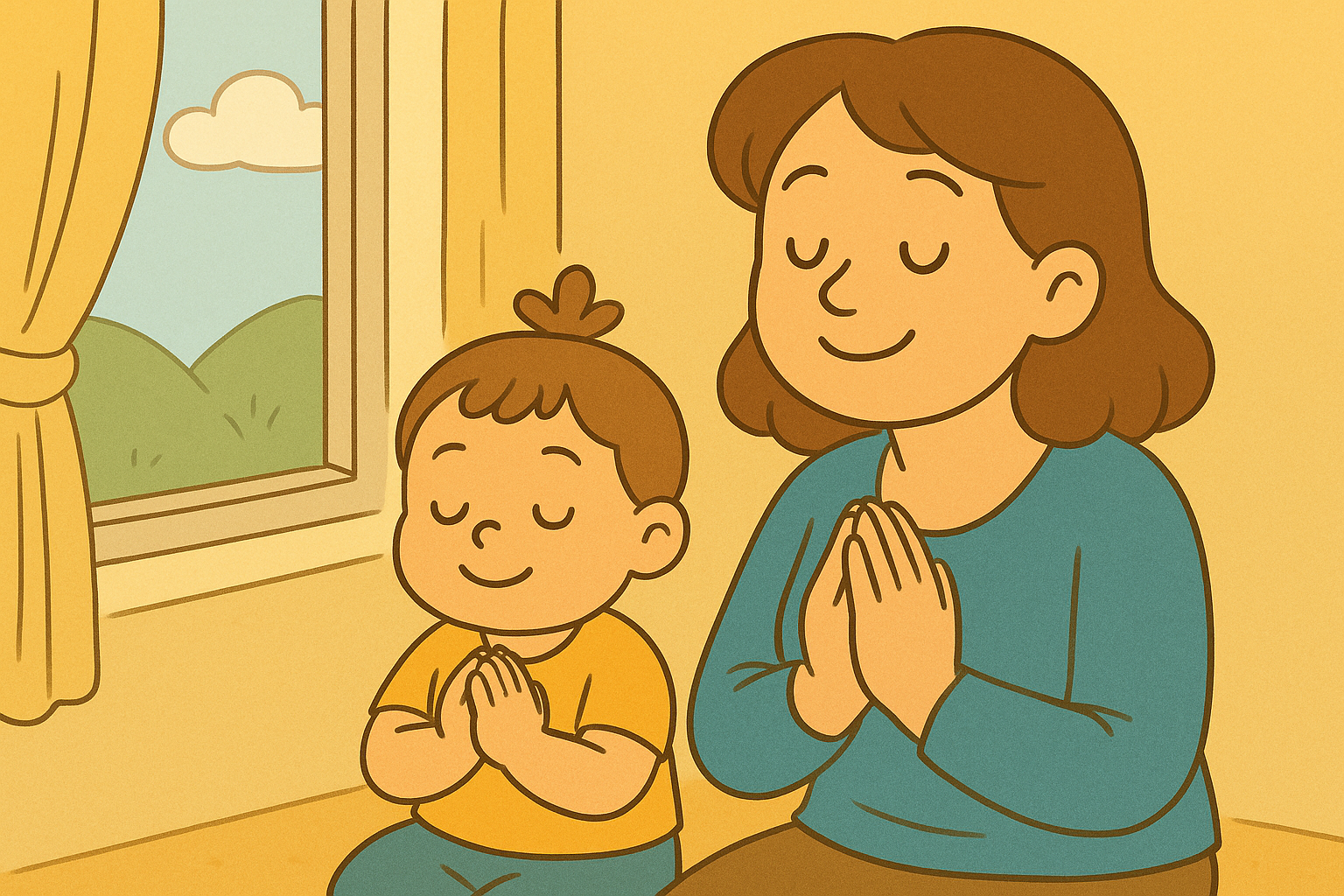How to Incorporate Mindful Moments Into Busy Days
How to Incorporate Mindful Moments Into Busy Days
Why Mindfulness Matters for Families on the Go
Modern family life can move quickly — schedules stack, transitions come often, and children (and adults) can begin to operate on autopilot. But mindfulness doesn’t require silence or long breaks. It simply means noticing the moment you’re in — with curiosity instead of urgency. Small mindful pauses can slow down the nervous system even in busy environments, helping families breathe, reset, and reconnect throughout the day.
Mindfulness is not about achieving calm. It’s about creating space — so emotions don’t build up faster than children can process them.
What Mindfulness Looks Like for Children
Children don’t always need words like “mindfulness” or “meditation.” They need chances to feel present in gentle ways. Mindful moments may look like:
Listening to sounds for ten seconds
Watching a cloud pass by
Stretching slowly before moving on
Pausing a routine to notice colors around them
Feeling their feet on the floor and wiggling toes
Mindfulness builds emotional awareness — not by telling children to relax, but by learning how to notice the moment they are in.
Helping the Body Slow Before the Mind Does
Often, the mind cannot calm down until the body does. Simple physical cues can anchor awareness:
Two slow breaths before leaving the house
Gentle shoulder rolls
Tapping arms or legs (“I feel where my body is”)
Slowly sipping water
A 5-second pause before starting any task
These movements support regulation, just as strategies in Using Routine to Support Emotional Regulation show how physical anchoring helps children regain emotional balance.
Incorporating Mindfulness Into Existing Routines
Families don’t need extra time to practice mindfulness — it can slide naturally into routines already in place:
While brushing teeth: “Let’s notice the sound of the water.”
Before a meal: “What colors do you see?”
After school: “Let’s stretch like a slow cat.”
At bedtime: “What did your body work hard on today?”
Mindfulness blends best when it feels woven into daily flow — not added as another task to complete.
Using Curiosity to Introduce Presence
Instead of saying “calm down,” try using curiosity-based invitations:
“What do you hear right now?”
“How does your body know it’s tired?”
“Can you find something slow in this room?”
“Where do you feel energy today?”
Curiosity removes pressure — and encourages connection.
Creating Tiny “Pause Spots” Around the Home
You can place gentle reminders in various areas to invite mindfulness:
A soft pillow near the door for “pause before we go” moments
A picture of a calm scene near the sink
A breathing symbol taped near a light switch
A tiny “mindful moment basket” with a feather, sensory toy, or card
These cues echo techniques from Using Visual Cues for Routine Consistency, where environment helps guide emotional tone.
Using Sounds to Guide Mindfulness
Sound is one of the easiest ways for children to practice presence. Try:
“Freeze and listen” game
Soft chimes or nature sounds
“Name three sounds you hear right now”
Wind or bird-listening on short walks
Listening stretches attention — and returns the nervous system to a calmer baseline.
Making Movement Mindful
Movement can also become grounding when slowed down:
Balloon breathing (inflate slowly, deflate slowly)
Slow-motion walking
Waving arms like seaweed underwater
Tracing patterns in the air with a finger
Instead of eliminating energy — mindfulness helps guide it.
A Mindful Moment When Emotions Run High
Mindfulness is especially helpful during emotional storms — but only if offered gently:
Say:
“Let’s pause together for a moment.”
“Can we make this moment slower before we talk?”
“Want to choose a mindful card to help us reset?”
“Your feelings can stay — but let’s give them space.”
Mindfulness should never erase emotions — only hold them safely until they soften.
Reflecting on Moments of Presence
At the end of the day, simple questions can reinforce the skill:
“When did you feel really present today?”
“Did you hear or smell anything special?”
“Which mindful moment helped your body most?”
“What should we try again tomorrow?”
Reflection helps mindfulness become integrated — not just practiced.
Mindfulness as a Family Language
Mindful moments teach children that the day doesn’t have to rush forward without awareness. They learn to pause, observe, reset, and listen to their bodies and feelings — instead of getting swept away by them. Over time, mindfulness becomes less of an activity and more of a way of being.
This content is for educational purposes and is not a substitute for professional medical or psychological advice.
Popular Parenting Articles


